- Author Matthew Elmers [email protected].
- Public 2023-12-16 21:49.
- Last modified 2025-01-24 09:17.
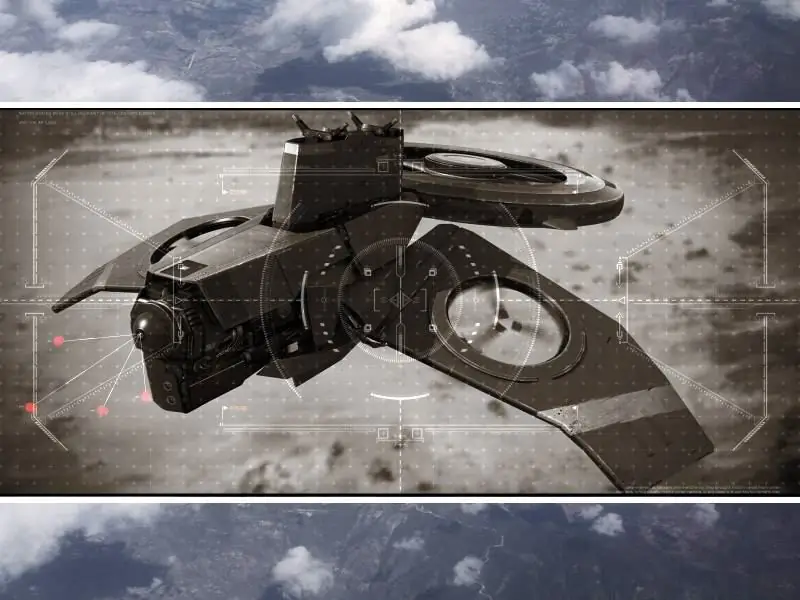
The joint work of manned and unmanned systems is an effective factor in increasing the combat effectiveness of the American army. Developments underway in all branches of the armed forces promise a dramatic qualitative change in capabilities. This article discusses some of the programs and key technologies in this area
The American army was the first to start developing the concept of joint operation of manned and unmanned systems (SRPiBS), for the first time in 2007, making an attempt with the help of a special device to establish interaction between unmanned aerial vehicles (UAVs) and helicopters. Then OSRVT (One System Remote Video Terminal) video terminals from Textron Systems (then AAI) were installed in the rear of the UH-60 Black Hawk helicopters of the American army.
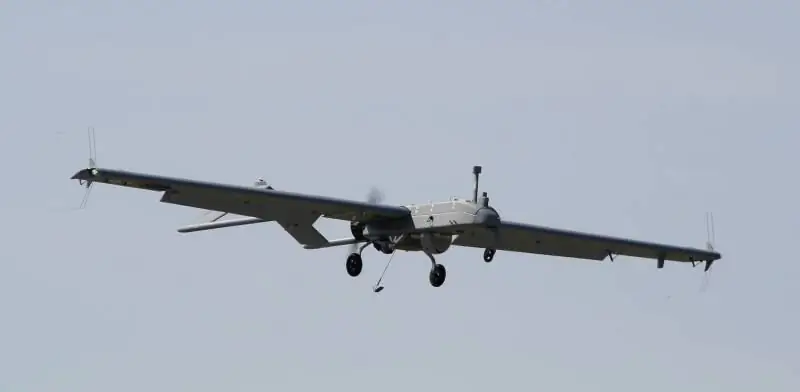
The requirement was that 36 helicopters receive the Army Airborne Command and Control System (A2C2S) in order to increase the level of situational awareness of the helicopter commander when approaching the landing area. Following the integration of the A2C2S system, technologies and collaboration mechanisms gradually began to develop.
Although the initial development of SRPiBS capabilities during the operation of the Americans in Iraq was the installation of additional equipment in the cockpit, this approach was supplanted by the integration of technologies - through the development of the SRPiBS 2 concept (the possibility of interaction of the 2nd level), which allows displaying images of the behind-the-cockpit space on existing displays. At the same time, the OSRVT architecture and subsystems allow fully preserving all the possibilities for presenting the available information from the sensors to the pilot.
The capabilities of the SRPiBS have reached significant development, and their importance for the American army is demonstrated by the current program for the reorganization of battalions of AN-64 Apache attack helicopters equipped with Shadow UAVs.
In March 2015, 1st Battalion at Fort Bliss changed flag, becoming 3rd Squadron and the first of 10 assault reconnaissance units that the army was about to form.
Upon completion of the transition, each combat aviation brigade of the army division will have a battalion of 24 Apache assault helicopters and a company of 12 MQ-1C Gray Eagle UAVs, as well as an assault reconnaissance squadron with 24 Apache helicopters and 12 Shadow UAVs.
The initial capabilities made it possible for the SRPiBS mechanisms to reach interaction levels 1 and 2 in accordance with the STANAG 4586 standard (indirect reception / transmission of data and metadata to / from UAVs and direct reception / transmission of data and metadata to / from UAVs, respectively), currently the army tends to Level 3 (control and monitoring of UAV onboard equipment, but not itself) and in the long term is aimed at achieving Level 4 (control and monitoring of UAVs except launch and return).
The main task of the army in the process of establishing mechanisms for joint work is the deployment of the RQ-7B Shadow V2 UAV and, in particular, the commissioning of its TCDL (Tactical Common Datalink) common tactical data transmission channel. TCDL offers significant benefits by providing increased levels of interoperability and encryption and moving traffic from the congested portion of the spectrum to the Ku band.
While the Army is able to combine its Shadow and Gray Eagle UAVs with helicopters, the current focus is on tactical aviation.“From this point of view, Shadow is the backbone of the interaction system, and Gray Eagle is only increasing its ability to interact with other platforms. As we moved from the lowest to the highest levels of interaction, we gained the strength and experience to move to Level 4,”says Colonel Paul Cravey, head of the Office of Doctrine Development and Combat Training for Unmanned Aircraft Systems.
The Army is phasing in the Shadow V2 platforms in stages and will continue to do so until the end of 2019, Cravey said, adding that “the Army is developing tactics, methods and sequencing, and doctrine in parallel with this deployment. The SRPiBS is still just at the beginning of its journey, but the subunits are beginning to include these tactics in their combat training … one of the subunits deployed all its systems in a combat operation, demonstrating the initial capabilities of joint work."
From August 2015 to April 2016, Squadron 3 was deployed to the Middle East in support of Operations Spartan Shield and Unwavering Determination, which made it possible to evaluate the mechanism of collaboration in real conditions. However, limitations in the operation of Apache helicopters did not allow units to use the full range of capabilities. Cravey explained: "This assault reconnaissance helicopter squadron has performed many more independent UAV sorties than they have joint operations with them … At this stage in real combat, we really do not have the opportunity to see the full range of close combat or get enough experience of working together."
Colonel Jeff White, head of reconnaissance and assault operations at the Office of Doctrine Development and Combat Training, said significant efforts were being made to learn from the experience gained and analyze the results of the work performed after the exercises, as well as to develop a combat training plan and infrastructure for SRPiBS operations.
“One of the areas in which we work with all stakeholders is the expansion of the training base. The ability to learn on real platforms, as well as on virtual systems with individual and team training, said White. - Part of the training takes place on our Longbow Crew Trainer [LCT] and Universal Mission Simulator [UMS]. The use of LCT and UMS is an important step in the right direction."
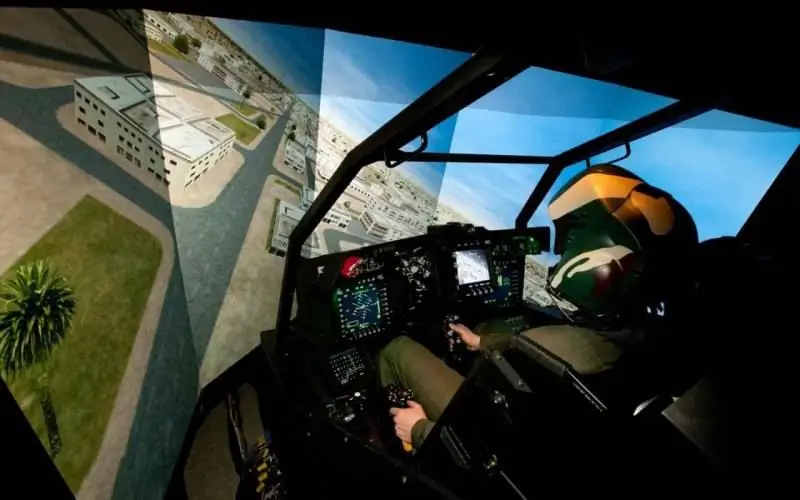
These systems will help to partially solve the problem of limiting access to the combined airspace and the availability of "real" platforms, as well as reduce training costs.
Colonel Cravey noted that much of the development of the SRSA concept is proceeding in line with expectations and contributing to the enhancement of exactly the capabilities for which it was designed. “At the unit level, it is being implemented in accordance with what we have conceived. As the possibilities for moving to higher Levels of interaction grow, we may see some new techniques emerge that our guys can use. And at the moment they are using them to do basic things as we intended."
While the use of on-board UAV equipment for surveillance, reconnaissance and information gathering is the most available functionality and may become an obvious factor in the rapid increase in capabilities, Cravey noted that there is a growing awareness among all types of forces that other hardware can provide broader benefits. “There is a great demand for war with the use of electronic / radio technical means and target designation using UAV platforms, which allows us to develop mechanisms for joint actions of manned and unmanned systems. We launch a UAV that detects radio frequency signals from enemy positions and transmits them directly to Apache helicopters, which then work out these positions."
As White noted, the potential for using the capabilities of the SRPiBS, in addition to the already existing schemes, is gaining more and more recognition in other types of armed forces. “One of the areas on which we want to focus is combined arms combat operations on the basis of ground forces. But, perhaps, the sphere, the continuous expansion of which we are observing, may seem rather unexpected - joint combined-arms actions … that is, joint work, not just with the use of only army forces and means, but also with the involvement of common forces and means. We strive to work out this direction in order to increase the efficiency of all branches and branches of the armed forces”.
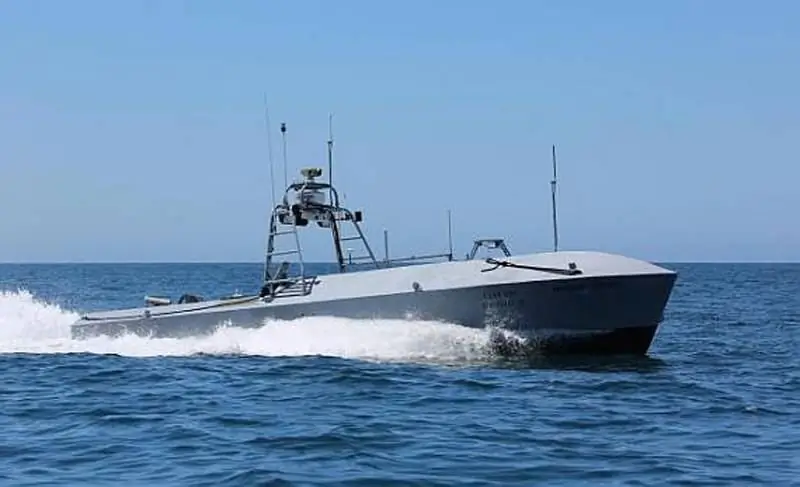
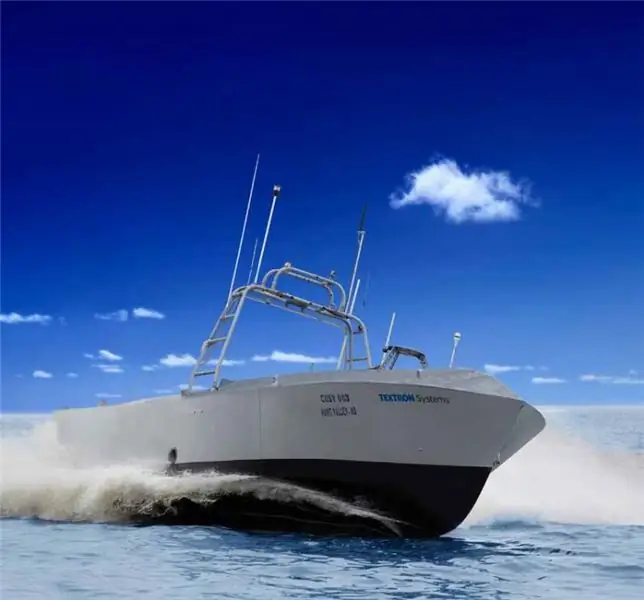
Also, the key to improving the SRPiBS is the improvement of the Shadow V2 platform, a number of which have already been deployed or are planned to be deployed.
“The most visible enhancement already implemented on the Shadow platform is the high-resolution avionics,” said Cravey. "It helps solve Shadow's biggest problem - strong acoustic signatures of platform visibility."
Cravy explained that the Shadow V2 UAV's on-board equipment includes the L-3 Wescam MX-10 optical reconnaissance station, which takes high-resolution photo and video recording, which allows the drone to work at a greater distance from targets, while the level of unmasking noise.
Further development of the V2 aircraft is aimed at the possibility of establishing communication using the Voice over Internet Protocol (voice over the Internet protocol) and relaying via programmable VHF radio stations JTRS. For special tasks, the Shadow V2 UAV is also equipped with IMSAR synthetic aperture radar.
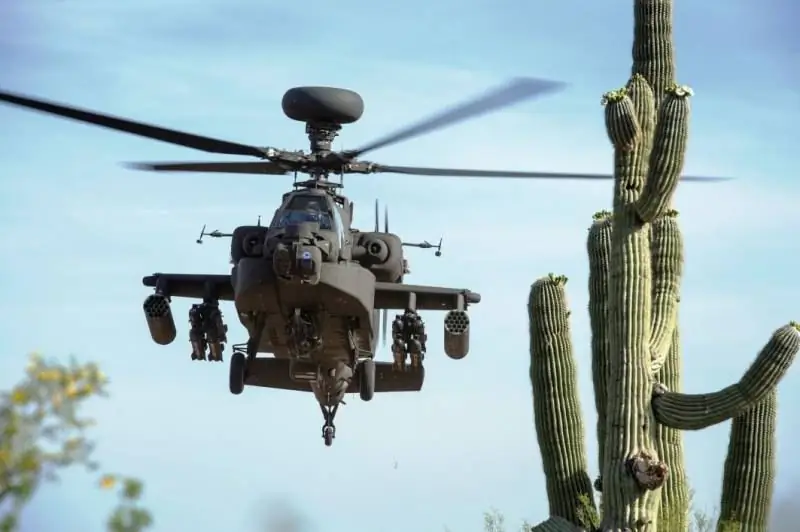
The power plant is still a bottleneck for the Shadow UAV, and therefore regular upgrades are planned along with measures aimed at increasing resistance to weather conditions, which will allow the device to work in the same conditions as the Apache helicopter.
Bill Irby, head of unmanned systems at Textron Systems, said that version 3 software for Shadow is currently being rolled out, with version 4 slated for mid-2017.
“We have developed a very tough software implementation plan with the army, in the past, unique individual improvements and updates were implemented as they were ready. What we did was develop a strict scheme for adding several changes at once,”Irbi explained.
“The system is currently capable of running software version 3 at Interop Level 2 so that Apache helicopter pilots can receive images and data into their cockpit directly from the UAV without delay, they can see targets in real time. The implementation of the software in mid-2017 will allow us to reach Interaction Levels 3/4, which will enable pilots to control the camera on the UAV, assign new waypoints for it to follow, change its flight route, and also provide better visibility when performing reconnaissance tasks,”he added.
According to Irby, Shadow drones will also be able to work in conjunction with other platforms in a wider combat space. “Since the capabilities of the SRPiBS and the data transmission channel of the drone are digital and have excellent compatibility, any system compatible with the STANAG 4586 standard can be integrated into the Shadow UAV. This means that we can establish communication using the SRPiBS mechanism and technology with moving armored vehicles, aircraft and crewed and unmanned surface vessels."
Irby said the company has developed concepts that link the CUSV (Common Unmanned Surface Vessel) automatic surface vehicle to the Shadow UAV, expanding the platform's reach for a range of offshore missions. He also noted that the M2 variant of the Shadow drone will have a TCDL data link as standard and will be capable of SRPiBS initially.
Outside of the United States, other Shadow drone operators have expressed interest in the capabilities of the SRSA, Irby said, including Australia, Italy and Sweden.
Improvement of the ground control components should expand the range of users of the SRP & BS mechanisms. The general scalable interface, which will become one of the foundations of the professional development of the UAV operator of the American army, will look more like an "application" than any specific piece of equipment. Operators will be able to connect to any control system they want to use, and depending on the requirements of the combat mission, they will have different levels of control over the platform with which they work. For example, if the infantry deployed in front work through this interface, then they will only receive basic access and control over the onboard equipment of a small UAV in order to increase their level of command of the situation at close range, while artillery units or helicopter crews will be able to have a higher level of control. flight of the aircraft and its onboard systems.
The OSRVT terminal technology is also moving forward and its recently developed Increment II has a new human-machine interface and improved functionality.
OSRVT Increment II is a bi-directional system with enhanced capabilities that Textron Systems calls Interoperability Level 3+. The system will allow soldiers on the battlefield to control the equipment of the drone, they will be able to indicate areas of interest and offer a flight route to UAV operators.
The update includes new hardware and software, including a bi-directional antenna and more powerful radios. The new HMI comes in the form of a touch-screen Toughbook laptop.
For the US Department of Defense and another customer, the software now runs on Android. Images and data from the Increment II system can also be distributed among nodes in a mesh network, although this is not part of the plans of the US military. The Australian military intends to implement a bi-directional OSRVT terminal on its Shadow platforms.
Colonel Cravey also noted that loading new software into the system gives operators a Level 3 Interaction.
Improved SRPiBS
The American army is currently evaluating the so-called capabilities of the SRPiBS-X, which, they believe, will allow the AN-64E Apache Guardian helicopter to work together not only with its Shadow and Gray Eagle UAVs, but also with any compatible UAV operated by the Air Force, Navy and by the Marine Corps.
SRPiBS-X will support Layer 4 interaction with aircraft equipped with communication channels of the C, L and S bands. 2019 year. In January, testing in real conditions of the SRPiBS-X concept was completed and a report was published based on their results.
The most ambitious developments of the American army in the field of SRPiBS technology promise capabilities to some extent even more advanced in comparison with the capabilities of the SRPiBS-X concept.
The Synergistic Unmanned Manned Intelligent Teaming (SUMIT) program for synergistic intelligent collaboration of manned and unmanned systems is managed by the American Army Aviation and Missile Research Center. The program is aimed at developing such capabilities as, for example, the operator's ability to control and coordinate several drones at once in order to increase the safe distance (without the need to enter the enemy's air defense zone) and increase the survivability of manned aircraft. In addition, in the future, the joint work of various systems will become one of the factors for increasing combat capabilities.
The SUMIT program is aimed at assessing the impact of the achieved level of autonomy, decision-making tools and technologies of the human-machine interface on the mechanisms of the SRPS. The multi-stage work begins with the development of dedicated simulators, followed by an independent assessment of the systems using simulations, and possibly demo flights in subsequent years. The experience gained from the SUMIT program is expected to help determine the timing and needs associated with the implementation of the autonomous and teamwork concepts of the Future Vertical Lift project.
In 2014, the US Army signed a contract with Kutta Technologies (now a division of the Sierra Nevada Corporation) to develop a mission statement component for the SUIVIIT program. The company is also leveraging its expertise here in the development of the widespread Bi-Directional Remote Video Terminal (BDRVT - an improved version of OSRVT) and a control kit for the ARMS, developed in collaboration with the Office of Applied Aviation Technology.
A mission statement system for SUIVIIT will allow the pilot to fly their own aircraft or helicopter, see which drones are available, select the ones that are needed, and group them with an intelligent type of interaction provided by cognitive decision-making aids.
The SRPiBS control kit already supports Interoperability Level 4 and has a touch screen interface. The system allows the operator to minimize the amount of information entered by him to issue a task to the platform, the process is implemented through modalities (touch, gesture, head position).
Advanced control functions will allow the pilot, using his touchscreen, to command the drone's sensor to capture and track an object or monitor a section of a road with an indication of its starting and ending points. Then the system sets the parameters of the UAV flight and control of its systems in order to obtain the necessary information as a result. Kutta Technologies also announced the development of voice, head movement and gesture control capabilities.
Loyal Wingman Program
Despite the fact that the army is already using part of the capabilities of the SRPiBS in real operation, the US Air Force wants to develop a more advanced concept of collaboration for its platforms, which will include higher levels of autonomy of the unmanned component (in order to perform the intended types of combat missions) and will require advanced drones to fulfill the set goals. The head of the Loyal Wingman program is the US Air Force Research Laboratory (AFRL).
“We are focusing our program on creating onboard software and algorithms that will allow the system to decide how to fly and what needs to be done to accomplish a mission,” says Chris Kearns, AFRL Program Manager for Autonomous Systems.
Kearns said that in addition to evaluating the technology needed to fly, they are also exploring what is needed to fly safely in shared airspace and perform tasks on their own. “How the drone can change the route during the flight in order to complete its task, and how it understands where it is in physical space, as well as at what stage of its task it is. Let us resolve these issues, and it will become an irreplaceable element of military operations."
Kerne, however, noted at the same time that the aircraft will operate within the boundaries of the designated mission. “This mission is what is prescribed for him and nothing more. It is the responsibility of the Air Force Commander to set the boundaries for understanding the drone, that is, what it is, what is allowed and what is not allowed for it to do.”
Kearns talked about her lab's algorithmic activities, including recruiting F-16 fighters as flying laboratories, in which regular pilots flew alongside pilots from the flight school. “We performed several test flights to demonstrate our ability to integrate software algorithms into an aircraft and demonstrate that we know how to fly and how to maintain a safe distance in formation with another aircraft,” she explained. - We took off two F-16 fighters, one of them controlled by the pilot, and the other with the pilot only as a safety net. The winged aircraft was controlled by algorithms, due to which it was able to maneuver in different battle formations. At the appropriate moment, the pilot of the first F-16 fighter gave the command to the second one to perform the task previously loaded into the on-board computer. The pilot had to monitor the correctness of the systems, but in fact his hands were free and he could only enjoy the flight."
“Doing this at the command level is a critical step demonstrating our ability to fly safely; that is, we can add more advanced logic and cognitive tools to help us “make sense” of the environment and understand how to adapt to changes during flight."
Kearns outlined plans for the first phase of the program, which will demonstrate the aircraft's ability to fly safely before beginning the study of higher-level autonomy. The Loyal Wingman Program will help the Air Force understand the potential challenges to which they can apply technology. One form of combat use for the Loyal Wingman would be the use of an unmanned aircraft as what Kearns calls a "bomb truck." “The unmanned slave aircraft will be capable of delivering weapons to the target identified by the lead pilot. This is the reason for the development of a collaborative mechanism - people who make decisions are at a safe distance, and unmanned vehicles strike."
The AFRL's Loyal Wingman Request for Information has identified the requirements for a technology that will achieve its goals, which must be integrated into one or two interchangeable units that can be deployed between aircraft as needed. A proof-of-concept demonstration is currently slated for 2022, when the combined team will simulate strikes against ground targets in the contested space.
Gremlins program
It is not surprising that the development of technologies and concepts of SRPiBS did not pass by the American Defense Advanced Research Projects Agency DARPA, which, as part of its Gremlins program, is testing the concept of small UAVs that can be launched from an airborne platform and returned to it.
The Gremlins program, first announced by DARPA in 2015, is exploring the possibility of a safe and reliable launch from an air platform and the return of a "flock" of UAVs capable of carrying and returning various dispersed payloads (27, 2-54, 4 kg) in "mass quantities" … The concept provides for the launch of a flock of 20 unmanned vehicles from the C-130 military transport aircraft, each of which is capable of flying to a given area of 300 nautical miles, patrolling there for one hour, returning to the flying C-130 and “docking” to it. The estimated cost of the Gremlin UAV with the release of 1,000 units is about $ 700,000, excluding the onboard load. At the moment, 20 launches and returns are envisaged for one drone.
Four companies, Lockheed Martin, General Atomics, Kratos and Dynetics, were awarded Phase 1 contracts in March 2016. In accordance with these contracts, they will design the system architecture and analyze the design to develop a conceptual system, analyze the launch and return methods, refine the working concepts and design the demo system, and plan for possible next steps.
DARPA plans to issue Phase 2 contracts in the first half of 2017, each worth $ 20 million. Following a preliminary design review slated for mid-2018, DARPA plans to select a winner and award a $ 35 million Phase 3 contract. Everything should end with a test flight in 2020.
The main task of the Gremlin UAV is to act as platforms for reconnaissance and information gathering at a great distance, thereby relieving manned vehicles or more expensive drones from the need to perform risky tasks. In order to expand their capabilities, drones will be able to work in a single network, and, ultimately, Gremlin UAVs will be able to launch other manned aerial vehicles.
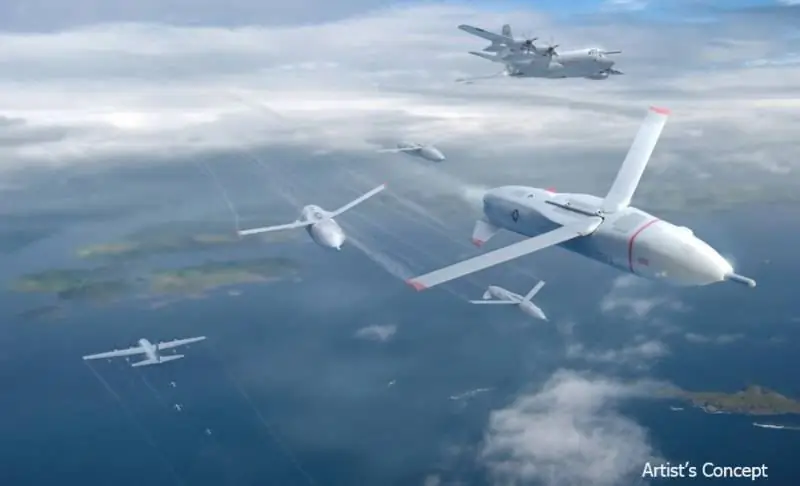
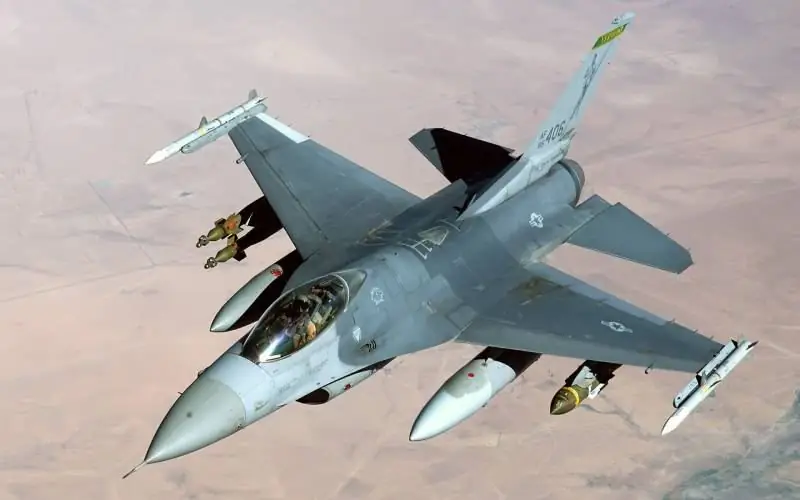
High level of autonomy
Kerns noted that Loyal Wingman has a robust simulation and modeling component. “Since we develop these algorithms with a higher level of logic, modeling, including simulation, allows us to test them. Our plans are to test software in the control loop, integrate algorithms into the platform that will fly, test it with it in the control loop on the ground before leaving with it and sending it flying. That is, after the simulation, we will receive test data showing the performance of the system, as well as the shortcomings to be eliminated."
Operators are part of the combined group of manned and unmanned systems and their comments and suggestions, that is, regular feedback, are extremely important during development. Evaluating the cognitive and physical load on the pilot and addressing any related issues is also very important, Kearns explained. "When we talk about working together with a group of manned and unmanned systems, the emphasis is really on working together … how to empower this group."
The SRPS concept has the potential to radically change capabilities on the battlefield, but if this is to go beyond simply receiving data from a sensor, which has already been demonstrated in real-world conditions, then it is very important to increase the level of autonomy.
Piloting an aircraft is a rather difficult task even without additional flight control functions and on-board equipment of the drones attached to it. If the work of large groups of UAVs becomes a reality, then a higher level of autonomy will be required, while the cognitive load during UAV operation should be kept to a minimum. The further enhancement of the capabilities of the ERS & BS will also largely depend on the opinion of the pilot community, which may be negative in the event that responsibility for control over UAVs negatively affects their work.
The military must determine where the capabilities of manned and unmanned systems to work together can best be applied. Inevitably, the development of technologies aimed at ensuring that the pilot of the aircraft can have full control of his drone. However, just because it is achievable does not necessarily mean that such capabilities should be adopted.






